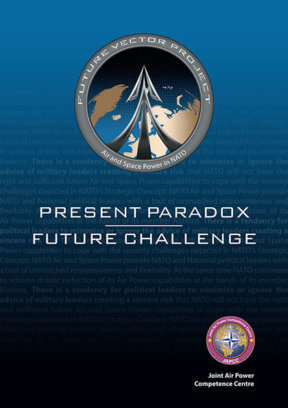Foreword
Joint Air and Space Power has been of utmost importance to the Alliance since NATO’s inception. The precise application of combat power from the air is founded upon superb equipment, superior training, very high levels of interoperability, and seasoned experience; all enabled by strong leadership exercised through a well-developed Air Command and Control (C2) capability.
With the end of the Cold War, we have witnessed an increase in NATO’s use of Joint Air Power. In each conflict, men and women have demonstrated the unprecedented value of Joint Air Power in providing NATO and national leaders with a tool of unmatched responsiveness and flexibility.
As we prepare for the future, it is critical that NATO and its nations capture the lessons identified from recent crisis response and combat operations. Turning these into lessons learned as we transition from NATO in operations to NATO prepared for operations is paramount. This transition combined with the on-going financial crisis makes it certain that investment in future Air Power capabilities will be under heavy scrutiny. It is thus critical for NATO and its nations to actively investigate, develop and promulgate their vision for Air and Space Power for the future. Proactive and collective planning will be absolutely essential to ensure the necessary capabilities and force readiness are available to provide a decisive advantage in future Alliance operations.
Therefore, the JAPCC initiated a comprehensive project ‘Air and Space Power in NATO – Future Vector’. This project intends to chart a future path with viable options and solutions to guarantee that Joint Air and Space Power continues to contribute to the security and success of NATO and its nations. Identifying an effective framework for developing Joint Air and Space Power capabilities, sustainment, training and exercises within the principles of Smart Defence (SD) and the Connected Forces Initiative (CFI) is the desired end state.
The project will produce a bi-focal work. A short term perspective will focus on NATO Forces 2020 and provide options at both the political and military levels. This view looks to enable force effectiveness while supporting the idea of force efficiency by retaining the required capabilities to ensure that Joint Air and Space Power in NATO remain ready, capable and accessible.
The longer term perspective will focus, within the context of the Future Security Environment (FSE), on preparing for the future. It will do this by providing viable options and effective solutions as an input for an air power vision / security concept. This will lay the foundation for Joint Air and Space Power in NATO which is fit for purpose and that can successfully meet the future challenges that NATO and its nations might face.
In front of you lies the first result of this Project: ‘Present Paradox – Future Challenge’. This study provides a summary of the current situation by addressing three main issues:
- The significance of Air and Space Power in recent history (tactical, operational, strategic level);
- Diminishing Air Power capabilities and capability shortfalls;
- Future Security Environment.
Chapter 5 of this document provides food for thought in different domains: at the political and military level, in the realm of Research and Development, Science and Technology and industries, and in relation to Partnership.
From this food for thought, a follow on work with a wider scope has started. This work will be the next step of the Project and will contain a series of essays that identify viable options and solutions to guarantee that Joint Air and Space Power continue to be key enablers for the security and success of NATO and its nations for both short- and long-term. The essays intend to provide a fresh, holistic, balanced perspective and offer innovative, actionable recommendations aimed at the appropriate political and policy maker levels within NATO and its nations. The series of essays will be published in a comprehensive compendium and presented during the JAPCC Conference from 18 – 20 November 2014.
Ultimately it is intended that the ideas and views expressed in the compendium will evolve into follow on activities in support of the enduring Project to guarantee that Air and Space Power in NATO is sufficiently available and fit for purpose when most needed in NATO, anywhere, anytime.
Joachim Wundrak
By Lieutenant General, GE AF
Executive Director, JAPCC











